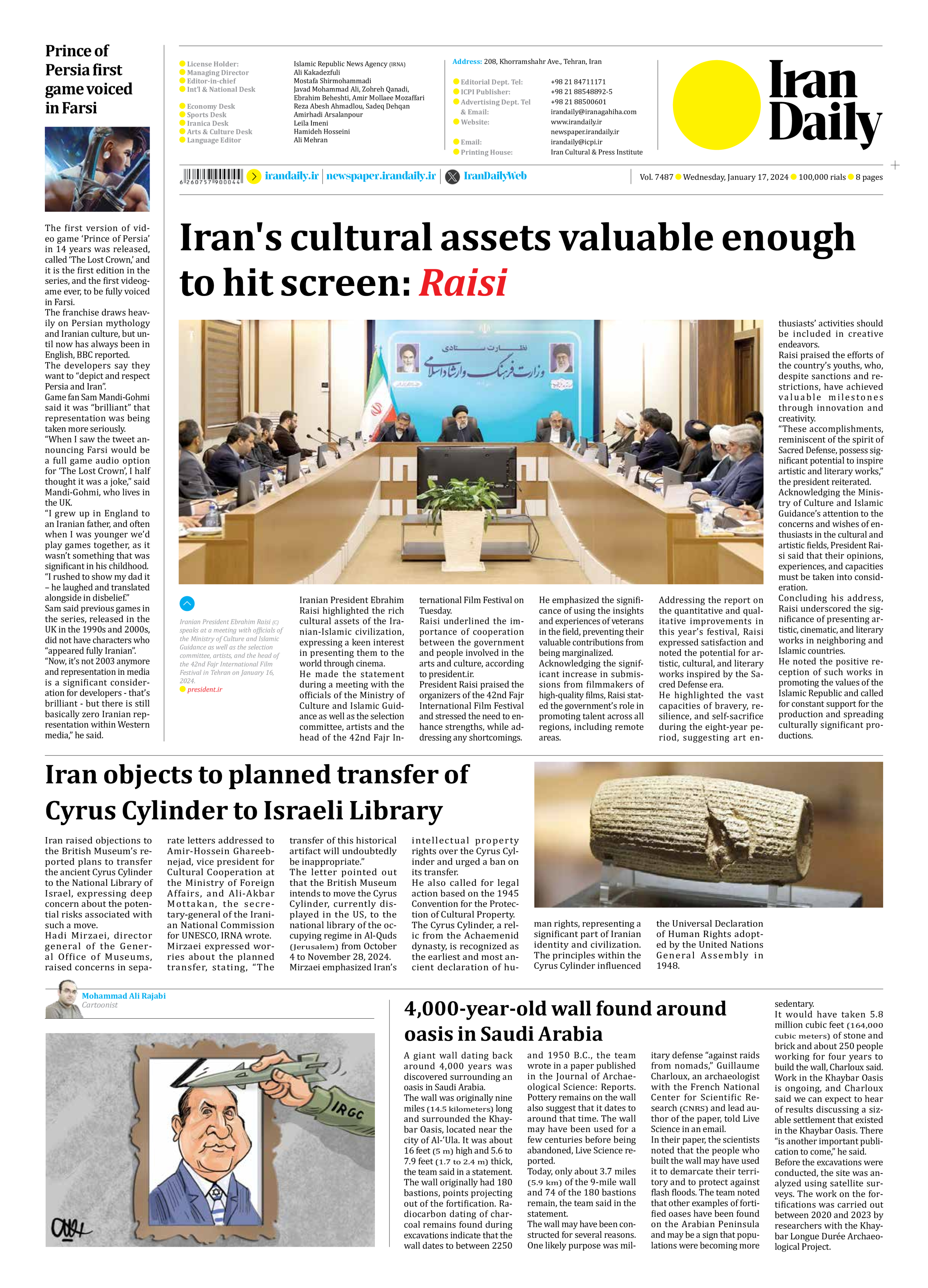
4,000-year-old wall found around oasis in Saudi Arabia
A giant wall dating back around 4,000 years was discovered surrounding an oasis in Saudi Arabia.
The wall was originally nine miles (14.5 kilometers) long and surrounded the Khaybar Oasis, located near the city of Al-’Ula. It was about 16 feet (5 m) high and 5.6 to 7.9 feet (1.7 to 2.4 m) thick, the team said in a statement.
The wall originally had 180 bastions, points projecting out of the fortification. Radiocarbon dating of charcoal remains found during excavations indicate that the wall dates to between 2250 and 1950 B.C., the team wrote in a paper published in the Journal of Archaeological Science: Reports. Pottery remains on the wall also suggest that it dates to around that time. The wall may have been used for a few centuries before being abandoned, Live Science reported.
Today, only about 3.7 miles (5.9 km) of the 9-mile wall and 74 of the 180 bastions remain, the team said in the statement.
The wall may have been constructed for several reasons. One likely purpose was military defense “against raids from nomads,” Guillaume Charloux, an archaeologist with the French National Center for Scientific Research (CNRS) and lead author of the paper, told Live Science in an email.
In their paper, the scientists noted that the people who built the wall may have used it to demarcate their territory and to protect against flash floods. The team noted that other examples of fortified oases have been found on the Arabian Peninsula and may be a sign that populations were becoming more sedentary.
It would have taken 5.8 million cubic feet (164,000 cubic meters) of stone and brick and about 250 people working for four years to build the wall, Charloux said.
Work in the Khaybar Oasis is ongoing, and Charloux said we can expect to hear of results discussing a sizable settlement that existed in the Khaybar Oasis. There “is another important publication to come,” he said.
Before the excavations were conducted, the site was analyzed using satellite surveys. The work on the fortifications was carried out between 2020 and 2023 by researchers with the Khaybar Longue Durée Archaeological Project.







